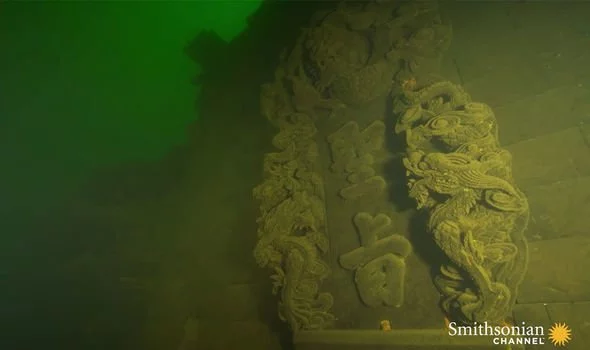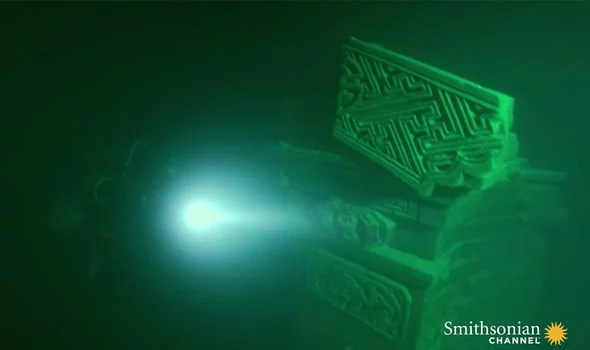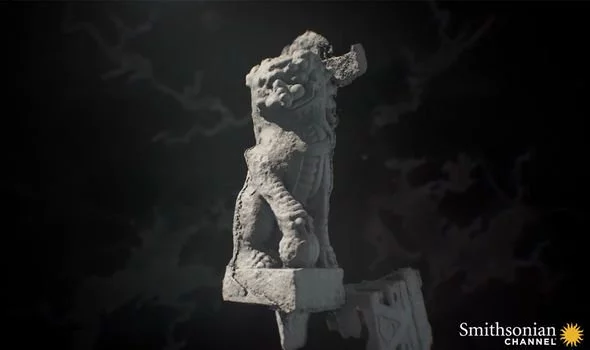Archaeologists stunned by China’s ‘unique underwater world’ shrouded in mystery
Hidden in the depths of Qiandao Lake, China, lies a mysterious sunken city. Myriad ornate temples, each intricately carved with the script and perfectly preserved, offer a tantalising glimpse into China’s imperial past. The city, known as Shi Cheng, is 140 feet underwater and was built during the Eastern Han Dynasty, the building dating back to the 2nd century.
Its name loosely translates to “Lion City”, and was once a bustling hub of commerce.
But, when it was drowned in the mid-20th century, it was largely forgotten.
Only in recent years have researchers and the public rediscovered its ancient splendours, many of which were explored during the Smithsonian Channel’s documentary ‘China from above: Mountain and rivers’.
It was here that the documentary’s narrator noted how the islands within the newly formed lake are actually the tops of hills, describing the space beneath them as a “unique underwater world”.


The ancient city was flooded as part of the Chinese government’s ‘Great Leap Forward’ programme and made way for the country’s first hydropower plant.
A landscape containing over 1,000 islands was created, which sits at the bottom of a reservoir close to the Qiandao Lake near the picturesque Wu Shi Mountain.
Lou Shanliang, a diver, was one of the first people to plunge into the lake and find the city.
He told the documentary how he used to swim in the waters as a child, and how finding out what was beneath was like discovering “another world”.

Teaming up with Wu Lixin, a cameraman, the pair used 3D scanning technology in order to bring the city back to life on the surface. Thought to have been built at some point between 25 and 200 AD, Lion City was once one of China’s most powerful cities and held on to this status for centuries.
While it had been forgotten for over 50 years, in 2014, the authorities discovered that the city was still very much intact and decided to start allowing tourists to visit it.
Explaining that their efforts were the first time the city has been captured three-dimensionally, Mr Wu said: “If we want to get a comprehensive set of data, we have to revolve around the object and take many photos from different angles.


“Then, we input those photos into a computer programme.”
What resulted were a series of 3D images revealing the ancient stonework found underwater, including majestic statues of lions and other figures.
Mr Wu said: “I hope that through our filming and exploration more submerged historic relics and the stories behind them can be brought to light again.”
Much of the stonework found in the lake dates to the 16th century and is considered as some of the best examples of Chinese architecture. The divers also found the city walls, which date from the same period, along with some notable wide streets and 265 archways.
In addition to these, they found five entry gates to the city and six main streets paved with stones connected to one another, making the city about the same size as 62 football fields. The Lion City is believed to have reached its peak in history between 1368 and 1644 when the Ming Dynasty ruled over China.
After this point it began to decline, the fatal blow coming in 1959 when the Chinese government flooded it. Now, however, history buffs and keen tourists can visit the lost city for themselves, and even dive beneath the water with guides.

Protected from wind, rain, and sun, the entire city has been branded a “time capsule” as almost every structure remains completely intact, including wooden beams and stairs. There have since been plans to boost its tourism potential by constructing a floating tunnel across the lake.





